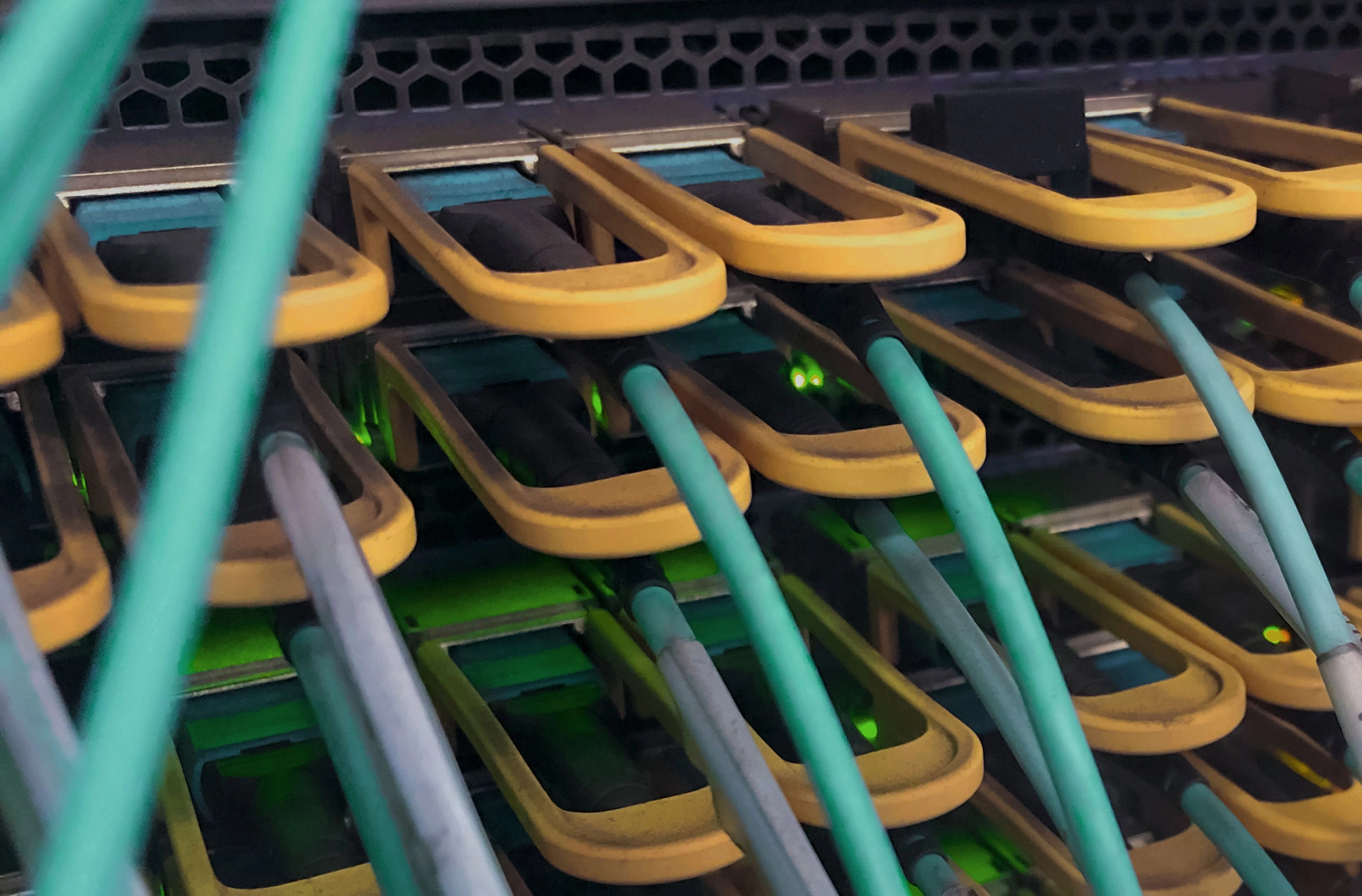Where is 100ZR Needed?
Simply relying on traditional direct detect technologies will not meet the growing bandwidth and service requirements of mobile, cable, and business access networks, particularly regarding long-distance transmission. In many instances, deploying 100G coherent dense wavelength division multiplexing (DWDM) technology becomes essential to transmit larger volumes of data over extended distances.
Several applications in the optical network edge could benefit from upgrading from 10G DWDM or 100G grey aggregation uplinks to 100G DWDM optics:
- Mobile Mid-haul: Seamless upgrade of existing uplinks from 10G to 100G DWDM.
- Mobile Backhaul: Upgrading links to 100G IPoDWDM.
- Cable Access: Upgrading uplinks of termination devices like optical line terminals (OLTs) and Converged Cable Access Platforms (CCAPs) from 10G to 100G DWDM.
- Business Services: Scaling enterprise bandwidth beyond single-channel 100G grey links.
However, network providers have often been reluctant to abandon their 10G DWDM or 100G grey links because existing 100G DWDM solutions did not fulfill all the requirements. Although “scaled-down” coherent 400ZR solutions offered the desired reach and tunability, they proved too expensive and power-intensive for many access network applications. Moreover, the ports in small to medium IP routers used in most edge deployments do not support the commonly used QSFP-DD form factor of 400ZR modules but rather the QSFP28 form factor.
How Coherent 100ZR Can Move into Mobile X-haul
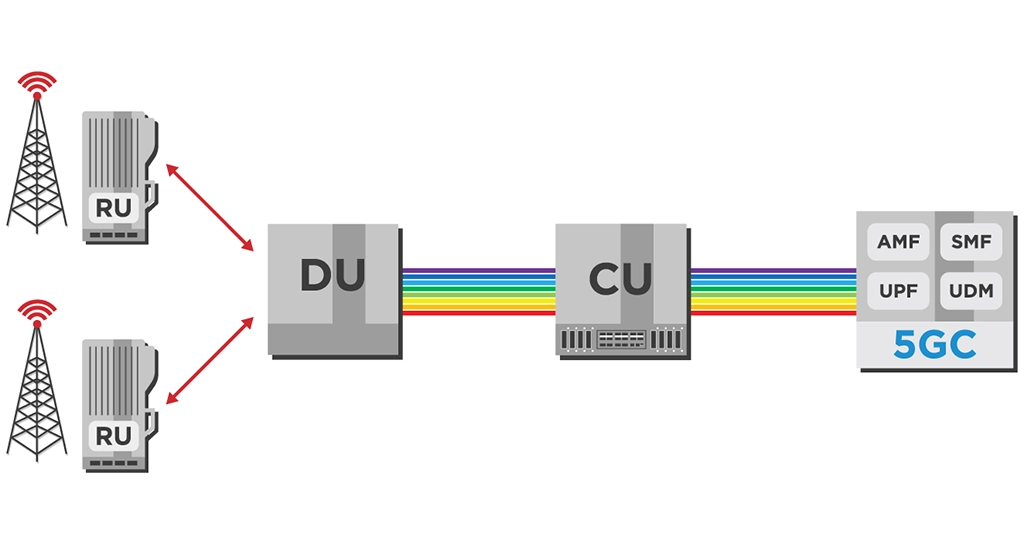
The transition from 4G to 5G has transformed the radio access network (RAN) structure, evolving it from a two-level system (backhaul and fronthaul) in 4G to a three-level system (backhaul, midhaul, and fronthaul) in 5G:
- Fronthaul: The segment between the active antenna unit (AAU) and the distributed unit (DU).
- Midhaul: The segment from DU to the centralized unit (CU).
- Backhaul: The segment from CU to the core network.
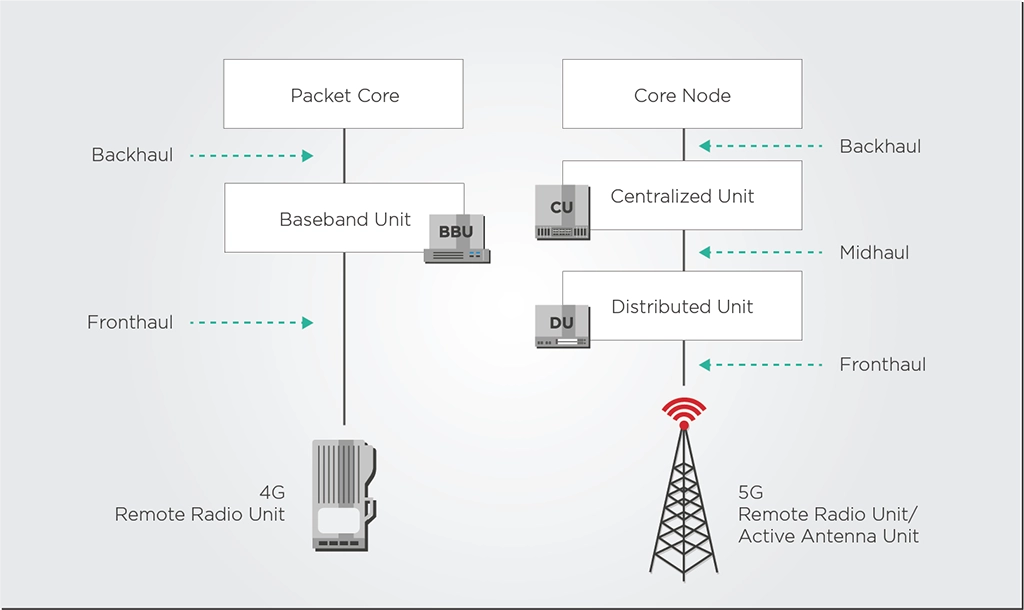
Most developed countries have already initiated the rollout of 5G, with many operators upgrading their 1G SFP transceivers to 10G SFP+ devices. Some of these 10G solutions incorporated DWDM technology, but many were single-channel grey transceivers. However, to advance to the next phase of 5G deployments, mobile networks must install and aggregate a greater number of smaller base stations to accommodate the exponential increase in connected devices.
These advanced stages of 5G deployment will necessitate operators to cost-effectively scale fiber capacity using more prevalent 10G DWDM SFP+ solutions and 25G SFP28 transceivers. This upgrade will pressure the aggregation segments of mobile backhaul and midhaul, which typically rely on link aggregation of multiple 10G DWDM links into a higher bandwidth group (e.g., 4x10G).
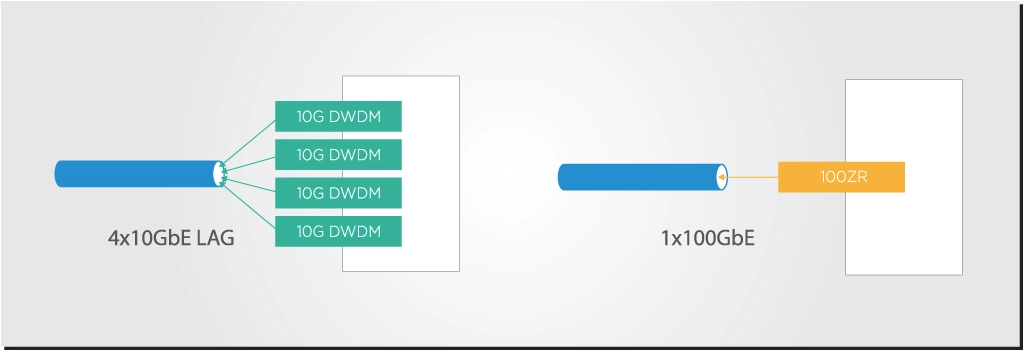
However, this type of link aggregation involves splitting larger traffic streams and can be intricate to integrate within an access ring. Adopting a single 100G uplink diminishes the need for such link aggregation, simplifying network configuration and operations. To gain further insight into the potential market and reach of this link aggregation upgrade, it is recommended to consult the recent Cignal AI report on 100ZR technologies.
Coherent 100ZR Uplinks Driven by Cable Migration to 10G PON

Cignal AI’s 100ZR report also states that the primary catalyst for 100ZR adoption will be the multiplexing of fixed access network links transitioning from 1G to 10G. This trend will be evident in the long-awaited shift of cable networks from Gigabit Passive Optical Networks (GPON) to 10G PON, driven by the new DOCSIS 4.0 standard. This standard promises 10Gbps download speeds for customers and necessitates several hardware upgrades in cable networks.
To multiplex these larger 10Gbps customer links, cable providers and network operators must upgrade their optical line terminals (OLTs) and Converged Cable Access Platforms (CCAPs) with 100G DWDM uplinks. Additionally, many of these new optical hubs will support up to 40 or 80 optical distribution networks (ODNs), making the previous approach of aggregating multiple 10G DWDM uplinks insufficient for handling the increased capacity and higher number of channels.
Anticipating these needs, the non-profit R&D organization CableLabs has recently spearheaded the development of a 100G Coherent PON (C-PON) standard. This proposal offers 100 Gbps per wavelength with a maximum reach of 80 km and a split ratio of up to 1:512. CableLabs envisions that C-PON, with its 100G capabilities, will play a significant role not only in cable optical network aggregation but also in other scenarios such as mobile x-haul, fiber-to-the-building (FTTB), long-reach rural areas, and distributed access networks.
Advancements in Business Services with 100ZR Coherent and QSFP28

Nearly every organization utilizes the cloud in some capacity, whether for resource development and testing or software-as-a-service applications. However, leveraging the cloud effectively requires fast, high-bandwidth wide-area connectivity to ensure optimal performance of cloud-based applications.
Like cable networks, enterprises will need to upgrade their existing 1G Ethernet private lines to 10G Ethernet to meet these requirements, consequently driving the demand for 100G coherent uplinks. Cable providers and operators will also seek to capitalize on their upgraded 10G PON networks by expanding the reach and capacity of their business services.
The business and enterprise services sector was an early adopter of 100G coherent uplinks, deploying “scaled-down” 400ZR transceivers in the QSFP-DD form factor when they were the available solution. However, since QSFP-DD slots also support QSFP28 form factors, the emergence of QSFP 100ZR solutions presents a more appealing upgrade for these enterprise applications, offering reduced cost and power consumption.
While QSFP28 solutions had struggled to gain widespread acceptance due to the requirement for new, low-power digital signal processors (DSPs), DSP developers and vendors are now actively involved in 100ZR development projects: Acacia, Coherent/ADVA, Marvell/InnoLight, and Marvell/OE Solutions. This is also why EFFECT Photonics has announced its plans to co-develop a 100G DSP with Credo Semiconductor that best fits 100ZR solutions in the QSFP28 form factor.
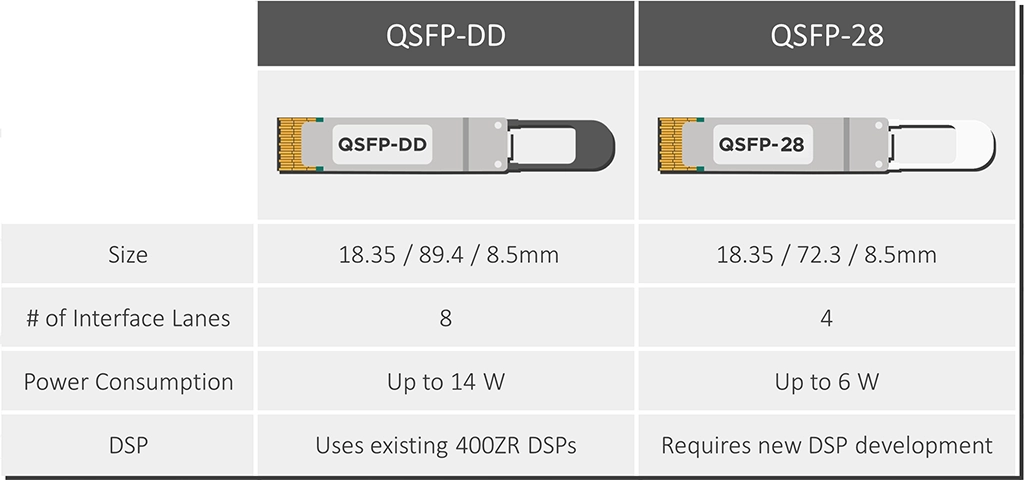
Takeaways
In the coming years, deploying and applying 100G coherent uplinks will witness increasing prevalence across the network edge. Specific use cases in mobile access networks will require transitioning from existing 10G DWDM link aggregation to a single coherent 100G DWDM uplink.
Simultaneously, the migration of cable networks and business services from 1Gbps to 10Gbps customer links will be the primary driver for the demand for coherent 100G uplinks. For carriers providing converged cable/mobile access, these uplink upgrades will create opportunities to integrate additional business services and mobile traffic into their existing cable networks.
As the ecosystem for QSFP28 100ZR solutions expands, production will scale up, making these solutions more widely accessible and affordable. This, in turn, will unlock new use cases within access networks.
